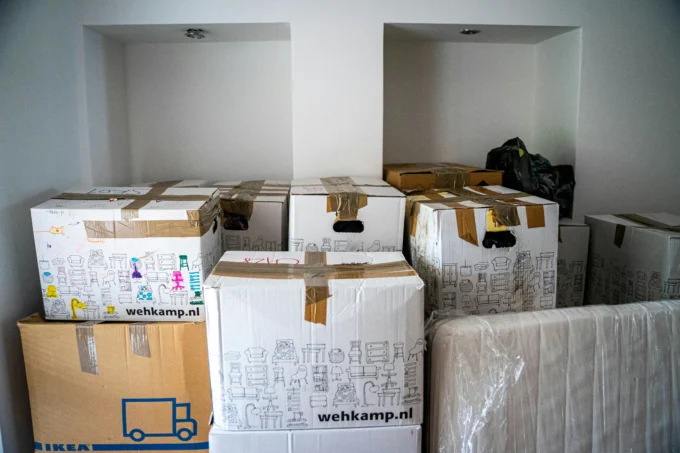- Home
- Articles
- Architectural Portfolio
- Architectral Presentation
- Inspirational Stories
- Architecture News
- Visualization
- BIM Industry
- Facade Design
- Parametric Design
- Career
- Landscape Architecture
- Construction
- Artificial Intelligence
- Sketching
- Design Softwares
- Diagrams
- Writing
- Architectural Tips
- Sustainability
- Courses
- Concept
- Technology
- History & Heritage
- Future of Architecture
- Guides & How-To
- Art & Culture
- Projects
- Interior Design
- Competitions
- Jobs
- Store
- Tools
- More
- Home
- Articles
- Architectural Portfolio
- Architectral Presentation
- Inspirational Stories
- Architecture News
- Visualization
- BIM Industry
- Facade Design
- Parametric Design
- Career
- Landscape Architecture
- Construction
- Artificial Intelligence
- Sketching
- Design Softwares
- Diagrams
- Writing
- Architectural Tips
- Sustainability
- Courses
- Concept
- Technology
- History & Heritage
- Future of Architecture
- Guides & How-To
- Art & Culture
- Projects
- Interior Design
- Competitions
- Jobs
- Store
- Tools
- More
How Dextra’s Rebar Couplers Improve Strength and Efficiency

In modern construction, every detail counts, especially when it comes to speed and safety. From high-rise towers to critical infrastructure projects, choosing the right reinforcement solutions can make a huge difference. One such solution gaining attention across the industry is Dextra’s rebar couplers. Used to connect reinforcing bars quickly and securely, these small but powerful components are reshaping how engineers and builders approach rebar splicing.
In this article, we’ll explore how they contribute to building stronger structures more efficiently and with less hassle.
Table of Contents
ToggleSimplifying the Rebar Connection Process
Traditional lapping methods require long overlaps of steel, which not only take up space but also add weight and complexity. These connectors remove the need for overlaps by creating a secure mechanical joint between reinforcing bars. This means no more wasted material, tighter structural alignment, and less rebar congestion, especially useful in reinforced columns, beams, and slabs.
By simplifying the process, workers can complete tasks faster with fewer errors, reducing labor time and cost.
Enhancing Structural Integrity
One of the main reasons couplers are used in critical applications is their ability to maintain full load-bearing capacity across joined bars. Unlike lapping, which can result in stress concentration or uneven performance, couplers provide a continuous load path. This consistency is especially important in areas subjected to dynamic forces, such as seismic zones or bridges.
When designed and installed correctly, the mechanical splice is just as strong, if not stronger, than the bars themselves.
Reducing Site Congestion and Clutter
On busy job sites, space is limited. Long rebar overlaps can clutter formwork, make concrete pouring difficult, and increase the risk of placement errors. Couplers eliminate this by connecting bars end to end, resulting in cleaner reinforcement layouts and more accessible work areas.
This not only improves safety but also speeds up other trades, like formwork installation and concrete placement. With less steel in the way, your entire construction process becomes more streamlined.
Supporting Sustainable Construction Practices
Efficiency isn’t just about time. It’s also about material use. In line with many sustainable strategies adopted in the construction industry today, rebar couplers help reduce waste by eliminating overlapping lengths and using only what’s needed for each joint. This approach not only cuts material costs but also supports greener building methods, especially in high-volume projects.

Some systems also reduce the need for on-site welding or cutting, further lowering carbon emissions and promoting greener building practices. For contractors working toward LEED or green certification, this matters.
Improving Construction Speed in High-Rise Projects
In high-rise towers and vertical structures, timing is everything. The faster floors can be completed and cured, the sooner the next phase begins. Couplers allow for prefabrication of reinforcement cages and vertical rebar extensions, speeding up the cycle time between floors.
Because they eliminate bar bending and overlapping, site teams can install reinforcement quicker and more precisely, helping projects stay ahead of schedule, even on tight timelines.
Providing Better Quality Control
Consistency in construction is key to avoiding costly rework. Mechanical splicing offers more control than manual lapping or welding. Each coupler is tested and manufactured to strict tolerances, ensuring uniform performance across the job site.
Some systems even allow for torque inspection, making it easy for quality control teams to verify correct installation. This reduces the risk of structural failure and provides peace of mind to engineers, project managers, and clients.
Adapting to Challenging Design Conditions
Not every project is straightforward. Tunnels, dams, offshore platforms, and nuclear facilities all require reinforcement systems that perform reliably under pressure. Couplers are often the go-to solution in these complex environments.
They allow for flexible bar arrangement, easier transport of prefabricated sections, and better access in confined spaces. Whether you’re working in extreme weather, underwater, or underground, couplers can adapt to the job’s demands without compromising performance.
Meeting International Standards and Specifications
Modern construction is global, and so are its quality expectations. Many rebar coupler systems are designed to meet international codes such as ACI, BS, or Eurocode. This ensures that projects can achieve compliance no matter where they’re built.
Using tested and certified products not only protects structural integrity but also simplifies approval processes with engineers, consultants, and authorities. It’s one more reason why rebar couplers have become a standard in world-class developments.
Conclusion
Reinforcement is the backbone of any concrete structure, and how you connect that steel matters more than ever. By simplifying construction, improving performance, and reducing material waste, rebar couplers are changing the way we build. Whether your project involves a single building or a massive infrastructure network, switching from traditional lapping to coupler systems can deliver measurable benefits in strength, efficiency, and sustainability. In today’s fast-paced construction world, the smarter the connection, the stronger the result.
illustrarch is your daily dose of architecture. Leading community designed for all lovers of illustration and #drawing.
Submit your architectural projects
Follow these steps for submission your project. Submission FormLatest Posts
The Ultimate Guide to Fencing in North Dakota: Choosing the Best Fence for Your Property
Watching a chain link fence twist in 70 mph winds near Minot...
Gaudí: Where Architecture Meets Science
Gaudí: Where Architecture Meets Science shows catenary arches, ruled surfaces, and biomimicry...
How Housing Market Forces Shape Architectural Design Today
Architecture never exists in isolation. Buildings rise from a mix of ambition,...
Why Portable Formaldehyde Gas Detectors Matter on Construction Sites
As construction practices shift toward more enclosed and material-intensive environments, the risk...












Leave a comment